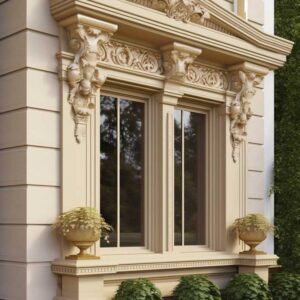Home design is an aspect most people want to achieve perfection. This building aspect contributes to the beauty and uniqueness of your home or business premises.
There are many ways you can bring out the beauty of your building, with the main focus on your building envelope. The building envelope separates your home’s interior from the outdoor conditions. Are you one of those who want to revamp their home design? One building envelope you can work with is your windows.
There are different window styles you can adopt for beauty. However, you must adopt the styles correctly to avoid getting the opposite of your intended goal. What, then, should you do? Below are the dos and don’ts of mixing window styles.
Yet before delving further, what’s a window style? It more or less depicts the working mechanism of your window.

Do’s For Mixing Window Styles
There are recommended actions when mixing window styles. The following are two of them.
- Ensure Theme Continuity
Window styles come in different themes with each defining a given period, traditional or modern. It’s best to ensure the continuity of whichever theme you adopt. Doing so will show uniformity, which is a beauty on its own, unlike adopting different themes that contrast each other.
Some of the traditional window styles you can adopt are double-hung, bay, and arch windows. Check them out at Ring’s End and others, you’ll find several options. Consider incorporating two or three of these in your home’s exterior. Yet there’s an alternative.
Instead of adopting different traditional window styles, adopt a similar one with different working mechanisms. For example, you can adopt single and double-hung windows or bay windows that are both angular and curved. With such, you’ll achieve theme continuity and contrast without negatively affecting your home’s beauty.
When it comes to modern window styles, you can adopt sliding, casement, awning, or picture windows. Utilize them the same way described under the traditionally themed windows.
As you ensure theme continuity in your window styles, it’s important to consider the theme in your other elements, like doors and siding. Continuity should also extend to this; suppose you’ve adopted picture windows to bring in natural lighting. Consider adopting sliding glass doors to achieve the same lighting purpose. The design of all your elements should complement each other.
- Consider Functionality
When mixing window styles, you might get carried away and focus on design and forget about functionality. The functionality aspect of your window should supersede design at all times. In general, a window mainly serves to provide ventilation and natural lighting. Therefore, your chosen window styles should meet these functions.
As you choose, you’ll learn some styles provide a given function better than others. This begs the question; what should you consider during the adoption?
If a given room, say the living room, faces a direction where minimal natural lighting gets into your home, it’s best to adopt a window style that brings in a lot of natural lighting. You can adapt French and picture windows when mixing the styles for this function. These provide a large surface area to add glass panes for lighting purposes.
In addition, you want to know the pros and cons of each window design and style you want to implement in your building. Despite the cons, will the window style still achieve its functions adequately? If it does, proceed to use it.

Don’ts Of Mixing Window Styles
Here are the don’ts of mixing up different window styles. Continue reading to learn more.
- Don’t Forget Security
Windows are one of the elements that envelope your home; they can give access to unauthorized people into your home if you don’t take care. Hence, you must factor in the security features of your chosen window style.
Windows offer different security levels, often based on framing and closing mechanisms. Here, your room’s use should govern the window style you choose. A high-security window style should suffice if you’re installing a window in your storage room. The same applies to a window to a safe or bedroom. Add window styles that’ll offer average security features for areas needing minimal security, like the kitchen or bathroom.
For this function, you can mix low- and high-placed windows, especially if your building or home has no stories. For areas needing high security, adopt styles that you place slightly higher on your walls and the reverse for minimum security needs.
- Don’t Stick To The Rules
Home design is an aspect that’s been there since time immemorial. As a result, based on the trends, rules for adopting designs tend to develop, and they depict how you should design your home. The same applies to window styles. Designers can say a given window style is best for a given situation, with another best suited for a different situation.
Such rules tend to be limiting, and you adopt the same window styles year in and out. But such rules no longer need to apply. You can customize your window styles to suit your preference and style; here, your creativity is at play. For instance, you can utilize ceiling-to-floor windows for a modern theme.
Suppose a given window style is ideal for a traditional theme. You can still adopt it as a modern style by adding some modernity, such as changing its framing to modern ones like PVC instead of wrought iron.
Conclusion
Window styles can bring out and add to the beauty of your home. The discussion above has given a guide on how you can achieve this by mixing your window styles. At the end of the day, trust your gut feeling and you’ll love the end result for sure.
![[ArtFacade]](https://artfasad.com/wp-content/uploads/2024/01/cropped-dom-100x100-1.jpg)





